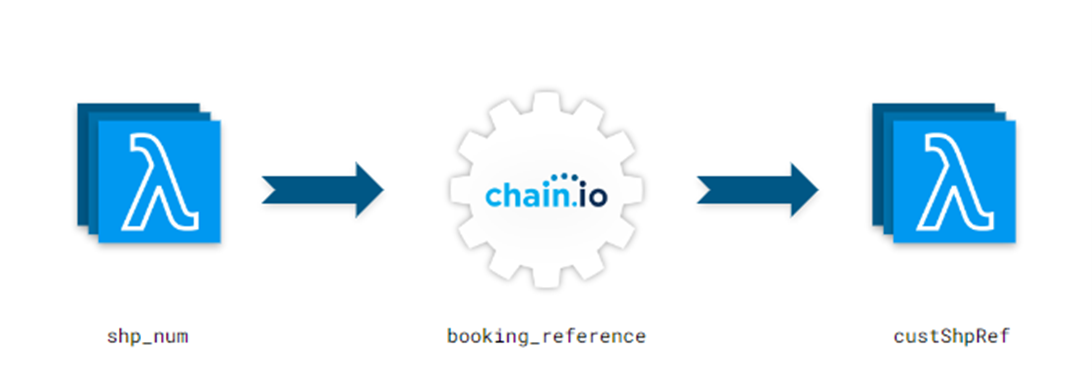In today’s global shipping market, bringing visibility into your supply chain is essential.
Whether you’re facing disruptions, or business is running smoothly, knowing exactly where customers’ containers and freight are at any time helps you respond to questions faster and anticipate issues before they happen.
Forwarders used to get all their visibility information from carriers and terminals, and data was riddled with errors and delays. Now the best, highest-quality data is coming from third parties.
In recent years, third-party visibility software has exploded in terms of innovation, availability, and usage. In fact, some of the biggest investments in supply chain technology over the last decade have been in the "Freight Visibility" category. Companies like Project44, Terminal49, Vizion API, and Windward have raised over a billion dollars from venture capitalists.
Visibility data providers, which Gartner calls Real-Time Transportation Visibility Platforms (RTTVPs), provide companies with enhanced insights into the status of their shipments by tracking goods throughout the various stages of a supply chain, from the procurement of raw materials to production and delivery.
It used to be that when containers went overboard or a ship caught on fire, it took days, weeks, or even months for shippers to know whether their freight was damaged or lost, much less which SKUs were impacted. Third-party visibility providers can mitigate supply chain risks and help companies make informed decisions in real-time using dynamic ETAs, automated exception detection, and proactive alerts.
The challenge is that innovations have been rightly focused on the shippers, which means that forwarders need to update orchestration and processes in order to make the best use of this revolution happening within the logistics industry.
For freight forwarders, this new visibility data isn’t always easily digestible or operational. Even forwarders who have enthusiastically adopted third-party visibility data still need to spend hours searching for order details and shipment milestones and entering them manually across their systems, slowing real-time updates on the location of cargo and frustrating customers.
Download a PDF of the free ebookStep Zero: Integrate Visibility with your TMS
We call it step zero because it’s so instrumental to using visibility data in all the other ways we recommend: integrate it directly into your transportation management system (TMS). This way, your team will have the most up to date information about all of your customers’ shipments. Once this essential integration is complete, you can leverage the data in three important ways: operationally, analytically, and for the benefit of your customers.

3 Uses of Real-Time Visibility Data for Forwarders
Once you are able to get visibility data from within your TMS, there are three main ways forwarders can make the most of innovations in real-time visibility.
Operational
By integrating visibility data into your TMS or other native platforms, your team gets specific details about the status of your customers’ shipments, available immediately. These third-party visibility data feeds help your team operate with improved accuracy and efficiency, as the information they need is much more readily accessible and reliable than if it was manually entered or tracked through dozens of emails and phone calls.
Operating efficiently and ensuring your customer’s goods arrive exactly when they need to is a juggling act. Manually tracking all of your shipments only adds to the stress of logistics management. With visibility data available directly in your systems, you’ll have a better idea of what action items still need to be completed before the load arrives at its final destination, like knowing which shipments need to go to customs, which need delivery orders, and which customers need to be updated about the latest shipment milestones.
When the unexpected happens, like delays or disasters, having visibility data integrated into your TMS also helps you perform exception management. You can easily compare the date the customer expects their freight to arrive against the ETA data from an RTTVP and see which shipments are not happening according to plan. Not only will this information save your team time and money, it helps build customer loyalty when you’re able to proactively communicate disruptions rather than waiting for a phone call.
Visibility data gives you the insights to take action and perform all of the necessary operational activities to get your customers’ products from point A to point B, exactly when they need to be there.
Analytical
While many supply chain professionals use visibility data to get real-time information, it can also be useful to analyze past trends to better understand your company’s shipping habits and processes.
As a freight forwarder, your role is not just about arranging shipments—it's about optimizing your business so you can ship out more cargo for more shippers, and build better relationships with your existing customers.
To get an accurate picture of your freight operations, take a look at the last week, last month, or even the last year of your forwarding business. When looking at your visibility data, consider the following questions:
- Which carriers had the worst time on performance?
- Which interim ports did my shipments move through?
- What was the total carbon impact of my shipment?
- Which shipping lanes saw the most delays?
- What were the weather conditions during a given shipment?
- What was your average demurrage spend?
RTTVPs share massive streams of very granular data to give you end-to-end visibility. Take advantage of this data so you can have a clear picture of exactly what's happening in your business. Knowing exactly what happened and the conditions surrounding the shipment will help you allocate resources and time accordingly.

Customer Facing
Building a loyal customer base and fostering true partnerships takes time. Sharing helpful insights and real-time updates with your customers will help you earn their trust faster.
Did you find something interesting during your visibility data analysis? Share your results with their team so they can make better decisions and planning. Did you notice a delay during the shipment process? Proactively reach out to your customer and explain what happened.
Sharing granular details and analysis around why shipments took the time they did will help both you and your customer get to the root cause of delays, and help you both work to avoid future disruptions.
Not only is visibility data helpful for building customer relationships, but you can integrate your visibility data directly into customer systems to even become a sticker partner in their supply chain. A few examples of this include:
- Creating a transactional web presence. Show your customers a dot on the map, with details of a single shipment. Rather than reaching out to you via email, they can view the status of their shipment just like a consumer would when tracking their items.
- Setting up a data stream that goes from your system to customers' TMS/ERP. If customers use you for many shipments, integrating your data directly into their software can be even more advantageous. They will have the same real-time visibility that you do into all of their shipments.
- Providing detailed analytics data. Whether your preferred visibility data provider shares analytics reports with you, or your team does a manual analysis, set up a stream of analytics data that is periodically delivered to your customers.
- Creating direct integrations with your customers and giving them visibility into your operations will make them much more likely to become a customer for life.
Integrations to Operationalize Your Visibility Data
Having a piecemeal view of your supply chain operations is no longer an option. Now, you and your customers need visibility data integrated directly into your systems. When you know where your customers’ shipments are, you can quickly and accurately communicate, increasing customer satisfaction and loyalty, and enabling your team to work more efficiently and maintain a competitive edge.
McKinsey estimates that 73% of supply chain functions still rely on spreadsheets. These kinds of workarounds for data integrations are inefficient and expensive.
If you have access to the incredible, innovative, groundbreaking data provided by third-party visibility platforms, and you’re still searching for it on websites and manually entering it into your TMS—or worse, a spreadsheet—you will not be able to compete in the coming decades.
The good news is that integration projects don’t have to be as time-consuming and expensive as they once were.
“When tech lives in silos, we get a fraction of the value, no matter how advanced that tech is,” said Simon Kaye, CEO, Jaguar Freight Services. "We believe the best tech enables and improves customer service. Integrating our visibility data feeds from Terminal49 into our Cybertrax TMS helps us serve our customers faster and with more accurate data, eliminating the need for them to reach out to us.”
Chain.io Can Help
Visibility data arrives to you through endless channels and formats. Chain.io translates this data and routes it to any file type in any location for freight execution, customer visibility, reporting, and analysis. Using our pre-built adaptors, we can integrate your TMS to any visibility service provider within weeks so your team can focus on what matters - serving your customers.

Our platform was built by supply chain experts, so we know what your data actually means. We know the business processes associated with booking references, and that they’re much more than the name of a field to be integrated.
Through our Canonical Data Model, input and output translators communicate through supply chain-specific language to ensure the right data is delivered, even if the applications we’re integrating use different terminology.

Even with your existing connections to other software and customers, Chain.io can be integrated anywhere in your organization. There’s no need to redo your entire ecosystem, no need to replace old systems or processes.
At Chain.io, we are automating best practices and changing the way forwarders leverage visibility data with customers.
Chain.io has pre-built connections to the leading RTTVPs, including Marine Traffic, project44, Terminal49, Vizion, and more. Existing connections means Chain.io can get visibility data from a RTTVP into a forwarder’s Transportation Management System (TMS) or native platform in as little as 2-3 weeks.
Want to make the most of your visibility data? Learn more at Chain.io or email us at info@chain.io to get started.
Download the whole ebook for free